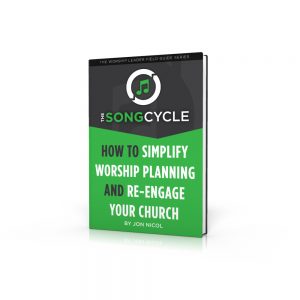Six Mistakes That Keep Your Church From Singing- (Part 2)
As a worship leader, do you ever feel like you’re leading worship for a group of department store mannequins, statues, or maybe even a room full of zombies? I call them screen zombies. They’re the people who stand there, staring at the screen with a blank, almost lifeless expression.
In many congregations, we see these lethargic faces on Sunday mornings—people who just stare at the screen. Sometimes you see their lips moving, sometimes you don’t. If you’re like me, you know exactly where the unengaged or grouchy-looking people sit, and it can mess with your focus while leading. Conversely, we also have those who encourage us with their active participation in worship, and we naturally gravitate toward them.
Now, we can’t judge what’s happening in the hearts of those who seem disengaged or grouchy. They might be deeply connecting with Jesus or hearing from God. We simply don’t know. But as worship team members and leaders, our job isn’t to force people to sing or worship. Instead, we aim to create an environment that encourages participation in musical worship.
The Problem: Discouraging Participation
The problem is that just as we can encourage participation, we can also discourage it. In this article, I’ll dig into some common mistakes we make as leaders and team members that might be keeping our churches from singing. These mistakes could be contributing to the abundance of screen zombies in your congregation.
I’ll outline each mistake, explain why it’s damaging to our church and its impact on congregational singing, and offer solutions to fix it. Chances are, you or your team members are committing at least one of these mistakes each week. The good news is that most of these mistakes are relatively simple to correct. So, let’s dig in.
(Click here for Part 1: Mistakes #1 & #2)
Mistake #3: Overcomplicating Song Choices
As an experienced and trained vocalist, you’re capable of singing songs that are far more complex than what the average person can handle. This isn’t just about vocal range—it’s about intricate melodies, syncopation, and complicated rhythms. But here’s the issue: when you choose songs with complex syncopation, unusual intervals, or other musically challenging elements, it can be difficult for your congregation to follow.
A major contributor to this issue is the prevalence of Christian radio songs. While many of these tracks have worship-focused lyrics, they aren’t necessarily meant for congregational singing. Their complexity makes them hard for the average person to learn and internalize quickly.
The bottom line is simple: when you want your congregation to actively participate, simpler is better. If you do want to introduce a more complex song, take the time to teach it and rotate it regularly so people can catch on.
We, as musicians, tend to forget how much easier it is for us to learn new songs. Whether it’s because we have a natural musical ear or simply hear the songs more often, the learning process is different for us. Most people in the congregation don’t have that advantage, so it’s crucial to keep things simple for their sake.
Mistake #4: Singing from the Screen, Not the Heart
On any given Sunday, you might see a lot of people singing along with the worship songs. But ask yourself this: are they really engaged? Are they singing from the heart, or just mouthing words from the screen?
Too often, the congregation ends up singing from the screen because we’ve introduced too many new or unfamiliar songs. I remember feeling frustrated when my church would sing loudly and confidently to old hymns or familiar choruses, but mumble through a beautiful new worship song I had introduced. Why? Because those old hymns were woven into the fabric of their church experience—they were sung from memory and from the heart.
When people don’t know a song well, they sing from the screen, often hesitantly and without confidence. If your set is packed with too many new songs, you’re essentially discouraging participation.
This doesn’t mean we should avoid new songs altogether, but it does mean we need to be intentional about how we introduce them. The key to making new songs stick is repetition. Introduce fewer new songs, but rotate them frequently until your congregation truly knows them. Here’s a useful mantra for your worship team:
“When we’re getting tired of the song, the congregation is just beginning to catch on.”
By the time the worship team feels ready to move on, the congregation is likely just becoming familiar enough with the song to sing it with confidence. So, repeat those new songs often, and be strategic about how many you introduce at once.
If you want a more detailed approach, our book, The Song Cycle: How to Simplify Worship Planning and Reengage Your Church, offers a step-by-step guide on determining the right number of songs for your church and how to rotate them effectively. Plus, you’ll find tips on introducing new songs and retiring ones that no longer resonate.
Click HERE for Part 3 Mistakes #5 & #6
This article was originally published in Worship Musician Magazine, October 2024 issue and has been modified from the original.
Stuck?
Learn how to level-up your team with this free video training.








